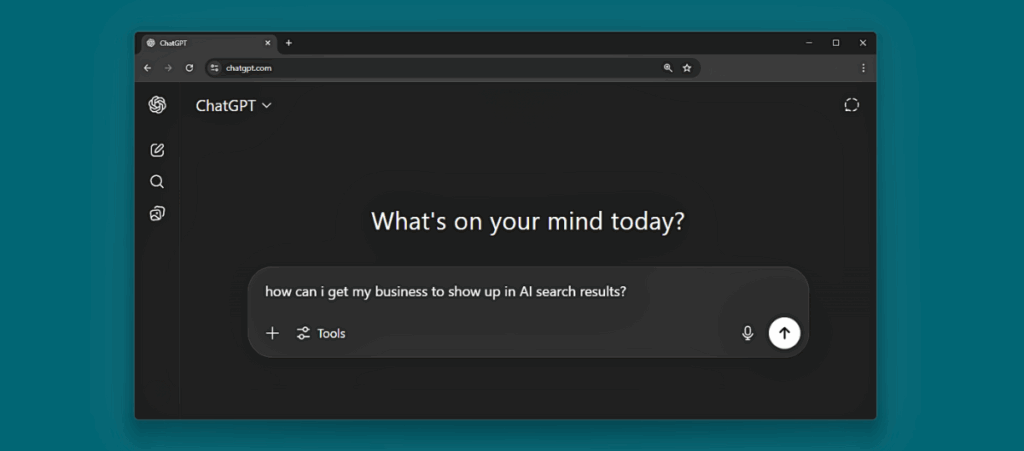
The SEO Evolution: Adapting to the Age of AI Answer Engines
The SEO Evolution: Adapting to the Age of AI Answer Engines https://www.lodestarmg.com/wp-content/uploads/2025/07/seo-evolution-adapting-to-the-age-of-ai-answer-engines-lodestar-marketing-group-1024x451.png 1024 451 Lodestar Marketing Group Lodestar Marketing Group https://www.lodestarmg.com/wp-content/uploads/2025/07/seo-evolution-adapting-to-the-age-of-ai-answer-engines-lodestar-marketing-group-1024x451.pngFor years, the primary goal of search engine optimization (SEO) has been to drive clicks to your website. But the landscape is rapidly changing. The rise of generative AI (GenAI) systems like ChatGPT, CoPilot, Claude, Gemini, and Perplexity is forcing a shift in approach. These aren’t just search engines; they’re answer engines, and they don’t retrieve entire web pages. They retrieve “chunks” of information.
A recent tactical guide from Click Savvy Marketing highlights that SEO professionals must adapt their strategies to ensure their content is not only retrieved but also reasoned over and included in GenAI-generated answers. Let’s explore why this impacts SEO best practices and what you can do today to be well-positioned.
GenAI Systems Prefer Chunks Over Pages
Instead of crawling full pages for keyword ranking, GenAI models break your content into semantic “chunks,” typically roughly 100–300 tokens each, though optimal size can vary depending on the content type and the specific LLM used.
Okay, before this gets too technical, let’s break down a few things into simpler terms, since many of us are new to understanding how GenAI works. Imagine that AI is just a super-smart student tasked with answering a question. To do this efficiently, the student doesn’t try to read an entire textbook (or your entire webpage) every time. Instead, they break down information into smaller, more manageable pieces. It’s like using a highlighter to mark key sentences or sections in a textbook.
These pieces of text are referred to as tokens. Think of tokens as the fundamental building blocks of language for the AI. A token might be a whole word, part of a word (like “un” or “realistic” from “unrealistic”), a punctuation mark, or even just a space. The number of tokens directly affects how much information an AI can process at once.
To make processing easier, longer pieces of content are divided into chunks. These chunks are like self-contained, mini-paragraphs, usually around 100-300 tokens in length. The goal is for each chunk to contain a complete thought or a clear, specific piece of information that makes sense on its own and can then be shown to you to answer whatever it is you asked the LLM to begin with.
So, when we talk about breaking content into “chunks,” we’re essentially asking you to organize your web pages and articles into clear, bite-sized, and meaningful sections. If your content is already structured this way, it’s like giving the AI perfectly labeled note cards. This enables the AI to quickly identify the exact information it needs to directly answer a user’s question, significantly increasing the likelihood that your content will be used in AI-generated responses.
These segments are then scored for relevance and clarity, and the most appropriate ones are selected to answer user queries. This means the way your content is structured and presented is more crucial than ever.
Structure Enhances Visibility
Clear formatting is also critical. Using headers, lists, and semantic tags helps AI systems understand and extract your content effectively. Gone are the days of overly clever introductions and jargon; GenAI favors direct, plain language that mirrors how people actually ask questions. Simplicity and clarity will improve your chances of being chosen.
Internal Links as Retrieval Maps
Your site’s internal linking strategy is no longer just about user navigation. It’s now about showing GenAI how concepts within your site connect to each other. Think of it as building your own knowledge graph, which is a structured network of information that mirrors the way AI systems process and link data. A robust internal linking structure provides a clearer roadmap for AI to understand the content of your site.
Practical Steps You Can Take Now
- Chunk Your Content Effectively
Break long-form pages into smaller, self-contained sections. Use headers that resemble natural questions to guide both users and AI.Here is an HTML example:
<h2>How Does Polarized Sunglass Technology Work?</h2>
<p>Polarized lenses reduce glare from reflective surfaces…</p>
- Use Clear, Declarative Language
Write content that states facts boldly and directly. Avoid hedging or using overly cautious language. Focus on strong, declarative sentences.For Example:
Do: “Vitamin D supports immune health.”
Don’t: “Some experts believe vitamin D might help…”
- Strengthen Internal Links
Link between related topics on your site using consistent and descriptive anchor text. This not only aids user navigation but also significantly boosts contextual understanding for large language models (LLMs), helping them connect related ideas across your site.
- Make Your Content AI-Crawlable
Ensure your content is accessible to AI systems: Avoid hiding content in formats like JavaScript or PDF files that are difficult for crawlers to access and interpret. Do not block key bots such as GPTBot or Google-Extended, as these are specifically designed to crawl content for GenAI purposes, and blocking them means your content won’t be considered for AI-generated answers. Implement schema.org markup to provide structured data that explicitly tells search engines and AI what your content means, not just what it says. This significantly improves the chances of your content being used for rich results and AI answers.
- Cover Topics Modularly
Create modular content assets that can be easily extracted and used by AI. This includes glossaries, side-by-side comparisons, detailed FAQs, and “TL;DR” (Too Long; Didn’t Read) blocks. Each of these increases your chances of being pulled into GenAI-generated answers.
- Build Authority Signals
Enhance the trustworthiness of your content by including author bylines, credentials, updated timestamps, and links to authoritative external sources. These signals help AI systems assess the credibility and reliability of your information.
- Add Semantic Redundancy
Rephrase your key points in a few different ways throughout your content. GenAI models match meaning rather than exact keywords. Create content that covers a topic, using not just exact keywords but also related terms, synonyms, and phrases. This helps search engines (which increasingly use semantic search) understand the depth and relevance of your content, leading to better rankings and user experience.
Where SEO Is Headed
In the age of answer engines, SEO is no longer just about visibility; it’s about retrievability. Your content must be chunkable, easy to understand, and semantically rich to be effectively processed by AI. Structured content is essential for where everything is headed. If your website isn’t designed with LLMs in mind, it won’t just be less clickable; it might become invisible altogether.
The good news is that there are things you can do to improve the chances that your business shows up in AI searches. If you want to discuss how to check for structured data, chunk your existing blog posts, or revamp your internal linking strategy to align with these new SEO best practices? Let’s connect and get started.
- Posted In:
- SEO



